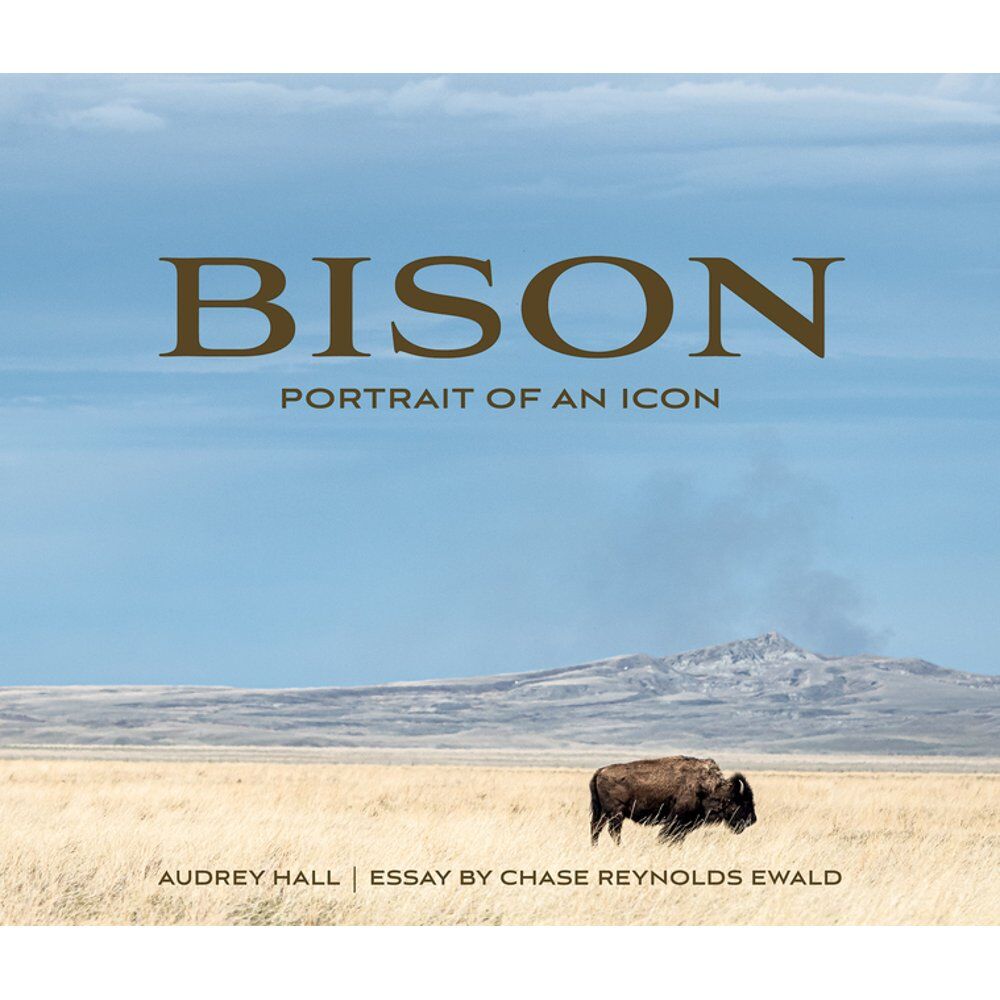Photographer Audrey Hall uses her camera lens to capture the quiet strength of America’s national mammal, the bison. Her words, along with several quotes, essays and poems from contributors, lend weight and wonder to her subject matter.
When it comes to bison the weight of the matter is terribly apparent. A species whose numbers were once an estimated herd 60 million strong dwindled to less than a thousand in just two decades.
Those massive herds were made up of descendants of European steppe bison with their 7-foot horn spans. It is believed they made their way to North American by crossing the Bering Land Bridge. In the early days of the western expansion, bison had evolved into what they look like today—dark brown, weighing 2,000 pounds or less and horns that reach about 3 feet.
When James Earl Fraser was asked to design a coin for the United States Mint in 1912 he had a very specific goal in mind. As Fraser is quoted in “Bison,” “When I was asked to do a nickel I felt I wanted to do something totally American—a coin that could not be mistaken for any other country’s coin. It occurred to me that the buffalo, as part of our western background, was 100% American.”
The buffalo nickel was minted from 1913 to 1938, so Fraser’s inspiration was drawn from a uniquely American icon whose numbers in 1912 had dropped to 2,000 animals.
The bison’s dramatic existence is played out in Hall’s vivid photos. Panoramic shots of mountain ranges with a buffalo herd grazing below are plentiful, but the close ups are the ones to study. Dense brown fur crusted with ice and snow gives readers a sense of the bison’s heartiness and penchant for facing a storm rather than turning away.
Hall’s photos are as pleasing to the eye as the words of writer Chase Reynolds Ewald, filmmaker John Heminway and poet Henry Real Bird are to the ear as they tell the story of the bison’s rise, fall and rebirth on the North American continent. Driven to near extinction by pioneers and settlers, bison have made a modest comeback thanks to ongoing conservation and tribal heritage efforts.
Natives are working to bring the bison back into the fold of their tribes and teach the old ways to a new generation. It is no surprise Native Americans and bison are still so entwined with one another. The trials of the bison closely match those of the early Natives as they both tried to remain on their ancestral lands. They are also known for the resilience and intelligence, though Ewald laments the bison didn’t figure out “the dangers of men with guns as soon as they might have.”
The bison was declared America’s National Mammal in 2016 and “Bison: Portrait of an icon” celebrates their early history to what should be a bright future. As the pages turn, it quickly becomes apparent this is more than just a coffee table book.
Jennifer Theurer can be reached at 620-227-1858 or [email protected].
